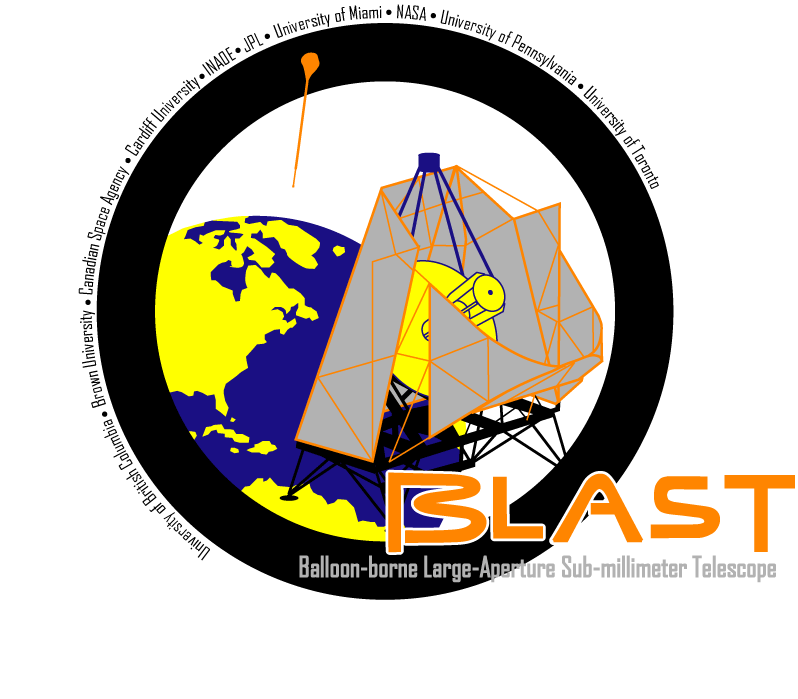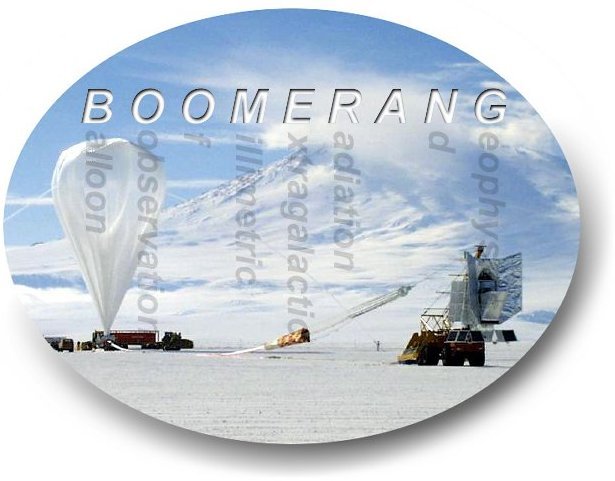|
Student projects
Student projects are available on exoplanetary sciences. Please follow this link to learn more.
Research Interests
Extrasolar planets, Observational Cosmology, Cosmic Microwave Background, CMB polarozation, High Z Submillimetre Galaxies, Astronomy Instrumentation.
Short CV
I was an undergraduate at the University of Rome "La Sapienza", where I graduated in 1996. After graduation, I assumed a Visiting Associate position at the California Institute of Technology followed in 1999 by a research position at the National Research Council in Italy. In 2003 I started my Ph.D. at the University of Toronto. Graduated in 2007, I assumed a Lectureship at Cardiff University which I left as Reader in 2017. Since Noveber 2017 I have been an associate professor at La Sapienza University of Rome, Department of Physics, and Honorary Senior Research Fellow at Cardiff University
Recent Research Activities
ARIEL
 The Atmospheric Remote-Sensing Infrared Exoplanet Large-survey (ARIEL) is a candidate for the ESA M4 (medium class) mission opportunity for launch in 2026.
This mission will be devoted to observing spectroscopically in the IR a large population (~500) of known transiting planets in our Galaxy, opening a new discovery space in the field of extrasolar planets and enabling the understanding of the physics and chemistry of these far away worlds.
The ARIEL mission is based on a telescope with an elliptical primary mirror (1.1 x 0.7 meters), a spectrometer covering the band from 1.95 to 7.8 micron, and a four-band photometer in the visible and in the near-IR (0.5 to 1 micron) to monitor the stellar activity, measure the albedo and detect clouds. If selected, ARIEL will be launched in 2026 and during its 3.5 years operations from an L2 orbit it will continuously observe exoplanets transiting their host star.
The Atmospheric Remote-Sensing Infrared Exoplanet Large-survey (ARIEL) is a candidate for the ESA M4 (medium class) mission opportunity for launch in 2026.
This mission will be devoted to observing spectroscopically in the IR a large population (~500) of known transiting planets in our Galaxy, opening a new discovery space in the field of extrasolar planets and enabling the understanding of the physics and chemistry of these far away worlds.
The ARIEL mission is based on a telescope with an elliptical primary mirror (1.1 x 0.7 meters), a spectrometer covering the band from 1.95 to 7.8 micron, and a four-band photometer in the visible and in the near-IR (0.5 to 1 micron) to monitor the stellar activity, measure the albedo and detect clouds. If selected, ARIEL will be launched in 2026 and during its 3.5 years operations from an L2 orbit it will continuously observe exoplanets transiting their host star.
To learn more, visit AREIL's official web page
BLAST
 The Ballon-borne Large
Aperture Submillimetre
Telescope operates from a high-altitude
balloon platform to study the processes of star formation in our Galaxy and in galaxies at cosmological distances.
The focal plane measures dust emission in three photometric bands centered at 250, 350 and 500 um behind a Cassegrain telescope lifted into the
stratosphere by a helium balloon.
The original BLAST instrument had three successful flights from Fort Sumner, TX (2004), from Kiruna in Sweden (2005), and McMurdo Station in Antarctica (2006).
The addition of a submillimetric polarimeter turned BLAST into BLASTPol giving the capability of detecting dust cloud magnetic fields in the Galaxy to study
their relevance on the processes of star formation.
BLASTPol was flown from McMurdo station in 2010 and 2012. The next flight will see an enhanced version of this submillimetric polarimeter with a larger telescope
and focal plane of polarisation-sensitive Kinetic Inductance Detectors. This is BLAST, The Next Generation.
The Ballon-borne Large
Aperture Submillimetre
Telescope operates from a high-altitude
balloon platform to study the processes of star formation in our Galaxy and in galaxies at cosmological distances.
The focal plane measures dust emission in three photometric bands centered at 250, 350 and 500 um behind a Cassegrain telescope lifted into the
stratosphere by a helium balloon.
The original BLAST instrument had three successful flights from Fort Sumner, TX (2004), from Kiruna in Sweden (2005), and McMurdo Station in Antarctica (2006).
The addition of a submillimetric polarimeter turned BLAST into BLASTPol giving the capability of detecting dust cloud magnetic fields in the Galaxy to study
their relevance on the processes of star formation.
BLASTPol was flown from McMurdo station in 2010 and 2012. The next flight will see an enhanced version of this submillimetric polarimeter with a larger telescope
and focal plane of polarisation-sensitive Kinetic Inductance Detectors. This is BLAST, The Next Generation.
To learn more, visit BLAST's official web page
H-Atlas
 The Herschel ATLAS is the largest key astronomical project awarded on ESA's Herschel Space Observatory as an Open Time survey.
The survey mapped one eightieth of the sky in 600 hours of Herschel time.
The reduced data will be made publicly available.
The Herschel ATLAS is the largest key astronomical project awarded on ESA's Herschel Space Observatory as an Open Time survey.
The survey mapped one eightieth of the sky in 600 hours of Herschel time.
The reduced data will be made publicly available.
Learn more visiting the Public Web Site .
Technology development
I am working on a number of projects to improve technology for astronomy and to extend the use of such technology to civil applications.
These include the ESA funded development of a
LWIR Mercury Cadmium Telluride focal plane array for astronomy, with AIM INFRAROT-MODULE, and Caeleste.
A similar work with SELEX ES is conducted as part of the ARIEL, EChO and Twinkle programmes.
Kinetic Inductance Detectors developed at Cardiff can be useful in a number of civil applications requiring passive imaging and spectroscopy in the THz. With STFC-IPS funds we are developing a general purpose THz camera in partnership with QMC Instruments Ltd., and a passive THz scanner.
Past Projects
EChO
 The Exoplanet Characterisation Observatory (EChO) was a candidate for the ESA M3 programme, and would have been the
first dedicated mission to investigate exoplanetary
atmospheres, addressing the suitability of those planets for life and placing our Solar System in context.
The Exoplanet Characterisation Observatory (EChO) was a candidate for the ESA M3 programme, and would have been the
first dedicated mission to investigate exoplanetary
atmospheres, addressing the suitability of those planets for life and placing our Solar System in context.
To learn more, follow this link .
BOOMERanG
 The Balloon Observations Of Millimetric
Extragalactic Radiation and Geophysics experiment
is an instrument to measure the anisotropies in the cosmic microwave background and polarization.
The 1.2 m off-axis telescope flew three times, in 1997 from Palestine, TX, in 1998 and 2001 from McMurdo, Antarctica,
in two successful Long Duration flights. Results gathered in the first two flights showed the spectrum of the sound waves in the
primordial Universe. Data from the 2001 flight mainly concerns CMB polarization and are being analized.
The Balloon Observations Of Millimetric
Extragalactic Radiation and Geophysics experiment
is an instrument to measure the anisotropies in the cosmic microwave background and polarization.
The 1.2 m off-axis telescope flew three times, in 1997 from Palestine, TX, in 1998 and 2001 from McMurdo, Antarctica,
in two successful Long Duration flights. Results gathered in the first two flights showed the spectrum of the sound waves in the
primordial Universe. Data from the 2001 flight mainly concerns CMB polarization and are being analized.
To learn more, visit Boomerang at the University of Rome, or at
CWRU
EbEx
 EBEX is a balloon-borne polarimeter designed to measure the intensity and polarization of the cosmic microwave background radiation on mid-angular scales. Measurements of the polarization of the CMB could probe an inflationary epoch that took place shortly after the big bang and significantly improve constraints on the values of several cosmological parameters. EBEX will also provide critical information about the level of polarized Galactic dust which will be necessary for all future CMB polarization experiments.
EBEX is a balloon-borne polarimeter designed to measure the intensity and polarization of the cosmic microwave background radiation on mid-angular scales. Measurements of the polarization of the CMB could probe an inflationary epoch that took place shortly after the big bang and significantly improve constraints on the values of several cosmological parameters. EBEX will also provide critical information about the level of polarized Galactic dust which will be necessary for all future CMB polarization experiments.
To learn more, visit Ebex at the University of Minnesota, Minneapolis.
Ph.D. Graduates
Lorenzo Moncelsi, Staff Scientisti, California Institute of Technology
BLAST: studying cosmic and Galactic star
formation from a stratospheric balloon
Sam Rowe, Post Doctoral Fellow, Cardiff University
Passive terahertz imaging
with lumped element
kinetic inductance detectors
Subhajit Sarkar, Post Doctoral Fellow, Cardiff University
Exoplanet transit spectroscopy: development and application of a generic time domain simulator
Current Ph.D. Students
Lorenzo Mugnai
Andrea Bocchieri
|

